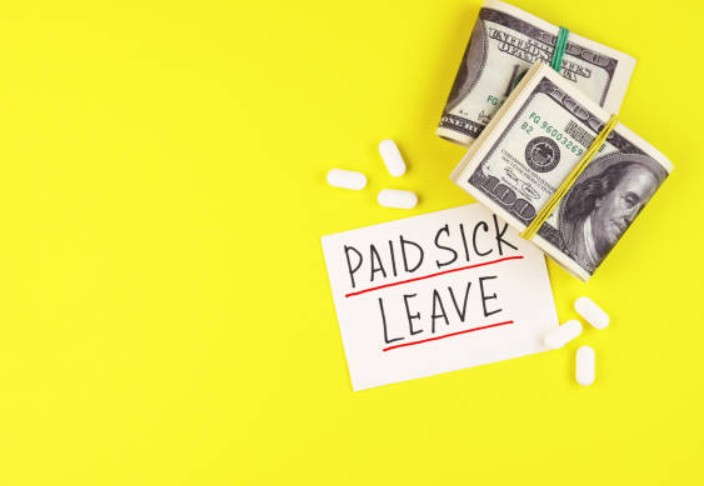When sickness strikes, the last thing you want to worry about is money. But for many UK employees, falling ill brings a sudden question to the forefront:
How much is Statutory Sick Pay per day?
This isn’t just a technical detail — it’s something that can significantly impact your ability to pay rent, cover bills, or put food on the table. Many people wrongly assume sick pay will fully cover their wages, but the reality is often very different.
In this guide, we’ll break down how much Statutory Sick Pay (SSP) is worth per day, who qualifies, when it starts, what happens if you need longer support, and crucially, what steps you can take to protect yourself financially.
How Much is Statutory Sick Pay Per Day in the UK?
Let’s get straight to the key question: How much is Statutory Sick Pay per day?
The current SSP rate (as of April 2025) is £123.55 per week. However, this figure doesn’t automatically tell you how much you’ll get each day. SSP is not divided equally over seven days. It’s calculated based on your qualifying days — the days you are normally scheduled to work.
How is SSP Calculated Per Day?
To find your daily SSP rate:
- Divide the weekly SSP amount (£123.55) by the number of qualifying days you work in a week.
Example Scenarios:
- If you work 5 days a week (Mon–Fri):
£123.55 ÷ 5 = £24.71 per day - If you work 4 days a week:
£123.55 ÷ 4 = £30.89 per day - If you work 3 days a week:
£123.55 ÷ 3 = £41.18 per day
If you work irregular hours, your employer will calculate an average based on your usual working pattern.
Important:
SSP is always a flat-rate payment, regardless of your normal salary. Whether you usually earn £200 or £2,000 per week, SSP stays the same.
This can be a serious shock for people who assume they’ll continue to receive their normal wage while off sick.
How Quickly Does Statutory Sick Pay Start After Illness?

One of the biggest misunderstandings about SSP is when it actually starts.
You don’t start getting paid SSP from your first sick day unless your employer specifically offers enhanced sick pay.
The Standard SSP Waiting Period:
- SSP typically begins on your fourth qualifying day of sickness.
- The first three qualifying days are known as waiting days and are unpaid in most cases.
- Waiting days only count as the days you were scheduled to work.
Example:
If you work Monday to Friday and become ill on Monday:
- Monday, Tuesday, and Wednesday are unpaid waiting days.
- Your SSP payment will begin from Thursday.
When Waiting Days Are Skipped:
There are some cases where SSP can start sooner:
- If you’ve had linked periods of sickness within the last eight weeks.
- If you’re ill due to a notifiable disease (like certain public health risks).
- If your employer offers occupational sick pay from day one.
It’s essential to confirm with your employer whether they offer any additional sick pay on top of SSP. Many companies don’t, and waiting days can catch people off guard.
Who is Eligible for Statutory Sick Pay and Who is Left Out?
While SSP covers a large portion of UK workers, not everyone is automatically entitled.
You Are Eligible If:
- You are legally classed as an employee (not self-employed).
- You earn at least £123 per week (before tax).
- You are off sick for four or more consecutive days.
- You have followed your company’s sickness reporting rules (usually notifying your employer promptly).
You Are Not Eligible If:
- You are self-employed.
- You earn less than £123 per week.
- You’ve used the maximum 28 weeks of SSP.
- You are receiving Statutory Maternity Pay.
If You Are Not Entitled:
Your employer must issue you an SSP1 form within seven days of your sickness notification. This allows you to apply for other financial support, such as:
- Universal Credit
- Employment and Support Allowance (ESA)
- New Style Jobseeker’s Allowance (if applicable)
Missing out on SSP can be worrying, but knowing the alternatives can help you avoid a financial crisis.
Is Statutory Sick Pay Enough to Live On?

For most UK workers, SSP alone is not enough to meet everyday living costs.
The national average weekly wage is significantly higher than £123.55 per week. Dropping to that amount during sickness can quickly cause financial stress.
Key Financial Considerations:
- SSP is taxed and subject to National Insurance deductions.
- Your rent, mortgage, utility bills, food, and travel costs often far exceed SSP payments.
- If you are the primary earner in your household, SSP can put significant pressure on your family’s finances.
Can You Receive More Than SSP?
Some employers offer occupational sick pay schemes that provide higher payments, often up to full pay for a limited period.
Occupational sick pay might:
- Cover 100% of your wages for a set number of weeks.
- Provide a phased reduction (e.g., full pay for six weeks, half pay for six weeks).
- Remove the three waiting days.
These schemes are not legally required and vary by employer, so it’s vital to check your employment contract or speak with HR.
What Happens If Your Illness Lasts Longer Than Statutory Sick Pay Covers?
Statutory Sick Pay has a clear limit:
You can only claim it for up to 28 weeks per illness period.
If your sickness lasts longer than this, your employer will stop paying SSP, and they must give you an SSP1 form. This document is essential for applying for further government support.
Next Steps After SSP Ends:
- You may be eligible for Employment and Support Allowance (ESA), which can continue to support you if you’re too ill to work.
- You might qualify for Universal Credit if your income drops significantly.
- If your illness becomes long-term or disabling, you could apply for Personal Independence Payment (PIP).
The key is to plan early. Don’t wait until your SSP is about to end to look for alternative support. Government benefit applications can take time to process.
What Should You Do to Successfully Claim Statutory Sick Pay?
The process to claim SSP is relatively straightforward, but it must be done correctly to avoid payment delays.
Steps to Claim SSP:

- Report your sickness to your employer as soon as possible. Each company has specific reporting timelines, so follow their rules carefully.
- Self-certify for the first seven calendar days. You don’t need a fit note (doctor’s note) immediately.
- Provide a fit note if your sickness lasts longer than seven days. This can come from your GP or hospital.
Your employer is responsible for calculating your SSP and adding it to your usual payslip. If they refuse to pay SSP when you believe you are eligible, you can contact HMRC or seek advice from organisations like ACAS or Citizens Advice.
Keeping records of all communications and documents will help you ensure your sick pay is processed smoothly.
Real Story: Sophie’s Experience with SSP Shock
When Sophie, a 28-year-old receptionist from Birmingham, caught pneumonia and was signed off work, she assumed her company would continue to pay her near her full wage. Instead, she found herself on just over £24 per day.
“I thought being a full-time employee meant I was covered, but I never realised how low SSP actually is,” she says.
Her rent alone was £750 per month, and with only £123.55 a week coming in, she quickly fell behind on bills.
“It was terrifying. I didn’t have savings. I relied on my parents and had to borrow money. I now know I should’ve checked my contract and looked into income protection insurance sooner.”
Sophie’s story is common — many UK workers only discover the realities of SSP when they are already in financial difficulty.
What Are Your Options If You Don’t Qualify for Statutory Sick Pay?
If you find out you’re not eligible for SSP, it can feel overwhelming. But there are other forms of help available.
Government Support You Can Apply For:
- Universal Credit: Income support based on your household situation, especially if your income drops significantly.
- Employment and Support Allowance (ESA): For people with limited ability to work due to health issues.
- Personal Independence Payment (PIP): If your illness or disability has long-term effects on your daily life.
- New Style Jobseeker’s Allowance: Available in some cases if you’re able to look for work.
Make sure your employer gives you an SSP1 form, which you’ll need when applying for these benefits.
You can also seek advice from:
- Citizens Advice Bureau
- ACAS
- Local Jobcentre Plus
They can guide you through the benefits process and check whether you qualify for any additional support.
Final Advice: What Should UK Employees Do to Prepare?
Understanding how much Statutory Sick Pay is per day is more than just a technical detail — it’s an essential part of protecting your financial wellbeing.
Here’s what you should do:
- Check your employment contract now. Don’t wait until you’re ill to find out what your company’s sick pay policy is.
- Plan for financial gaps. Consider setting up emergency savings or exploring income protection insurance.
- Know your rights. Understand when SSP starts, how it’s calculated, and what happens if you need long-term support.
Being proactive can save you from unnecessary stress and financial hardship when you’re already dealing with the challenge of poor health.






